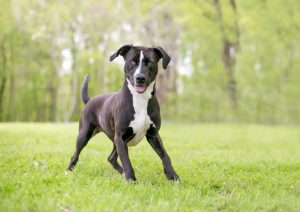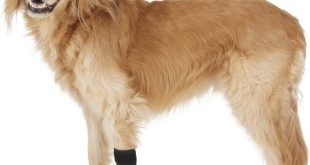Table of Contents
- Introduction
- What is Hygroma?
- How I treated my Pup’s Hygroma at home
- Other ways you can treat your dog’s Hygroma at Home
- Conclusion
Introduction
I have a Great Dane named Tyler. I adopted him when he was about 6 months old. He was a happy and healthy pup, and everything was going great for the first 4 months. This was until I found a swelling around his elbow. I was scared when I saw this because I thought it was a tumor or something. I then contacted my veterinarian immediately. My vet examined Tyler and concluded that he was suffering from a Hygroma.
Since Tyler is a Great Dane breed and I knew that most large breeds are prone to Hygromas due to their large size, so this did not come as a shock. Tyler loved to leave his bed, and sleep in a corner of the house which is a hard surface which I think is what contributed to his condition. Tyler’s Hygroma was checked and since it was not infected, the vet informed me that it could be successfully treated at home.
For the sake of those who have no idea about what a Hygroma is, let us touch on this topic a little before we get into how to treat this condition from the comfort of your home.
What is an Hygroma?

An Hygroma is a fluid-filled swelling caused by repeated trauma. This swelling is usually non-painful and typically occur over a pressure point or bony prominence such as the outside part of the elbow. This happens most times when your dog repeatedly lays on hard surfaces such as cement or hardwood floors as was the exact case with Tyler.
An Hygroma normally starts off as small and soft but can become large and hard over time. It may also be present or reappear after treatment throughout a dog’s entire life.
I was glad I found Tyler’s hygroma as soon as I could because I learned that Hygromas can become infected especially when they are left untreated.
Just in case you have noticed the same problem with your dog, here is a heads up on what to expect at your vet based on my experience.
When my veterinarian was performing Tyler’s diagnosis, he first performed a physical examination and asked a few questions about when I first noticed the swelling. He also wanted to know if I had noticed any changes in my dog’s behavior.
There was absolutely no need for a biopsy since my veterinarian did not see any abnormality. He even suggested that I help Tyler resolve this situation from home. Thankfully, with a little bit a research I was successfully able to do so. I will now be sharing my experience on how I treated Tyler’s Hygroma at home.
How I Treated my Pup’s Hygroma at Home

The first thing I did to properly treat the hygroma was to try to prevent further trauma to the affected area. I accomplished this by placing soft padding on Tyler’s favorite resting point since I found it difficult to make him use his bed.
After this, I bought soft padding and applied it around the hygroma. I wrapped it to prevent it from encountering hard surfaces especially when my canine decided to go and lay in his favorite spot.
These types of paddings are available in so many online and offline pet stores and they are very effective at protecting your dog’s elbow joints. All you need to do is, find the right size for your pooch and you are good to go.
Remember, even different dogs may heal differently, the more your pup wears this, the quicker the hygroma will go away.
Experts recommended letting your dog wear the padding for 3 weeks after the outward signs of the hygroma are gone. This is because it will help the joint to heal from the inside out.
When out for walks, swimming, etc. I usually take the padding off. The only time I let him use it is when he is laying down.
Vet’s Recommendation
According to my vet’s recommendation, you should remove the padding once a day to inspect the affected area for irritations. Tyler didn’t experience any irritation but if your dog does, please confirm the placement and snugness of the padding.
Please note that these paddings are not meant to be pulled up too high on the leg because they are not a compression bandage. They are a comfortable loose-fitting, protection for the joint.
Once done with treatment, wash the paddings and put them away so in case your pup develops another hygroma, you will have the treatment ready, and tackle this problem immediately.
Other Ways you can Treat your Dog’s Hygroma at Home
Just in case you cannot afford to purchase padding for your dog’s hygroma, there are some alternatives. You can dress the area with padding to relieve the pressure, assuming they will allow the dressing/padding to stay on.
The first thing to consider here is a donut Shaped Elbow Padding. This method is effective if you can get your pooch to not take it off its elbow.
Simply roll up a soft towel or foam tube into a donut shape. You should then use an ace bandage to wrap the towel or tube to keep its shape. Then place the donut hole over the elbow hygroma and attach the donut to your dog’s elbow.
The hardest part about using elbow padding is preventing the dog from pulling it off. Try different methods to attach the padding to your dog’s elbow like a rolled bandage, bandage tape, sports tape, ace bandage, or Velcro strips.
Other suggestions are using Camrosa ointment. This works well as a soothing and healing ointment while also helping with hair growth. It is a barrier ointment that does not wash off in rain or melt in heat so it can help prevent the hygroma from getting infected.
Another natural remedy that can help is Colloidal silver spray. This pray has healing, antibacterial and antifungal properties, It is all-natural and will help to prevent possible infections on the hygroma.
Conclusion
This was not Tyler’s case but here are some important points to note. Over time, hygromas may become severely inflamed along with additional symptoms that are more severe such as:
- Abscesses
- Fistulas
- Granulomas
- Infection
- Tissue Erosion
- Ulceration
If your dog’s hygroma is infected, it will be painful and warm to the touch. You will need to seek veterinary assistance which may include surgery.
It may also help to use a topical hot spot cream. They can help to soothe pain and inflammation, especially If the area is becoming irritated. This will soothe your dog and hopefully shift their attention away from the area. You can contact your vet for this and get the prescribed ointments online or from your local pet store.
In cases of no further complications, except for an enlarged hygroma which is rare, your vet may suggest drainage.
If drainage or surgery happens, it is especially important to care for the wounded area and keep it as clean as possible to prevent any kind of infection.
You can purchase post-surgery wound care that enables new tissue growth and promotes quick healing. This should be a kind that is non-irritating and does not contain alcohol of any kind, so it does not sting your pooch when it is applied.
You may also want to wrap the dog’s wound area to prevent the animal from further irritation after drainage or surgery. Simply get a lightweight wrap that is made of a stretchable material. The stretchable material helps to accommodate casts and bandages while still allowing for a standard range of movement. This wrap will prevent your pooch from biting, scratching, or pulling at wounds and stitches.
 Total Pooch Dog Supplements, Tear Stain Removers, De-wormers, Tylosin for Dogs and other great products.
Total Pooch Dog Supplements, Tear Stain Removers, De-wormers, Tylosin for Dogs and other great products.



